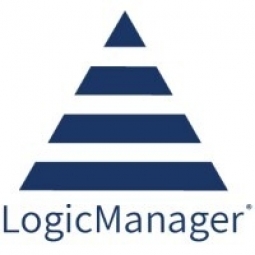Region
- America
Country
- United States
Product
- Not mentioned
Applicable Functions
- Business Operation
- Human Resources
Use Cases
- Regulatory Compliance Monitoring
About The Customer
Infinity Property and Casualty Corporation (IPACC) is a national provider of car insurance. The company is headquartered in Alabama, USA. IPACC specializes in nonstandard car insurance, providing insurance for individuals who cannot access it through standard providers due to factors such as prior driving history, age, and vehicle type. The company works with more than 12,500 independent agents to provide its services. IPACC was a recipient of the 2015 RMM Recognition Program due to its engagement across silos and levels.
The Challenge
Infinity Property and Casualty Corporation (IPACC) is a national provider of car insurance, specializing in nonstandard car insurance. They work with over 12,500 independent agents to provide insurance for those who cannot access it through standard providers due to prior driving history, age, vehicle type, and so on. The company was recognized in the 2015 RMM Recognition Program for its engagement across silos and levels. However, the company faces challenges in maintaining an open and effective line of communication between departments and increasing awareness of corporate goals across areas.
The Solution
To address its challenges, IPACC has implemented a program that consists of a diverse ERM team with members from executives to front-line employees and a variety of functional departments. The company holds monthly risk meetings to openly discuss both existing key risks as well as emerging risks. There is also quarterly formal risk reporting and communications to internal audit, and an annual comprehensive review of key risks, appetite and tolerances, as well as formal reporting to the board. In addition, the annual RMM assessment allows IPACC to identify where the company stands and benchmark their processes against industry standards. The results help define and decide what the program goals are going forward.
Operational Impact

Case Study missing?
Start adding your own!
Register with your work email and create a new case study profile for your business.
Related Case Studies.

Case Study
Remote Monitoring for Environmental Compliance
Emerson wanted to provide a connected environmental analyzer to their customers. They wanted to leverage IoT technologies to provide a software solution that was easy to use, real-time and centralized. Compliance with pollution control board guidelines and the ability to remotely calibrate and troubleshoot these devices was the primary objective. Requirements - Centralized Remote Monitoring. - IoT Based Smart Environmental Analyzers. - Remote Calibration and Troubleshooting. - User Friendly Application. - Reporting & Dashboards. - Compliance with pollution control board guidelines.

Case Study
ELI LILLY ADOPTS MICROMEDIA’S ALERT NOTIFICATION SYSTEM
Pharmaceutical production is subject to a strict set of enforced rules that must be adhered to and compliance to these standards is critically necessary. Due to the efforts of WIN 911’s strategic partner Micromedia, Lilly was able to adopt an alarm notification infrastructure that integrated smoothly with their existing workflows and emergency hardware and protocols. These raw energy sources enable the industrial process to function: electricity, WIN-911 Software | 4020 South Industrial Drive, Suite 120 | Austin, TX 78744 USA industrial steam, iced water, air mixtures of varying quality. Refrigeration towers, boilers and wastewater are monitored by ALERT. Eli Lilly identified 15000 potential variables, but limitations compelled them to chisel the variable list down to 300. This allowed all major alarms to be covered including pressure, discharge, quantity of waste water discharged,temperature, carbon dioxide content, oxygen & sulphur content, and the water’s pH.

Case Study
IoT Solutions Give Commercial Fishing Real-time insights
Technology to support vessels in the commercial fishing industry had not changed significantly since the advent of radar. Over the past 40 years commercial fishing in the United States has continued to be one of the most active, yet regulated industries. The combination of federal regulations and lack of technology created an opportunity for Faria Watchdog to go-to-market with a solution.
Case Study
Nfairlending Case Study
Erin Goodall, vice president and director of compliance at Valliance Bank, was the sole member of the compliance team. She was responsible for analyzing all the bank’s fair lending data to identify redlining, disparities, and any potential violations of the Community Reinvestment Act (CRA), Home Mortgage Disclosure Act (HMDA) and other laws. This was a time-consuming process, taking up to 96 hours per quarter, in addition to her general compliance responsibilities. She also had to decipher what the results meant and spent hours creating reports to explain the insights to the board, management, and compliance committees.
Case Study
Digital Transformation of FOSIS through AuraQuantic Platform
The Solidarity and Social Investment Fund (FOSIS), a service of the Chilean Government, was faced with the challenge of standardizing its administrative processes to comply with the new regulatory framework established by the Law of Digital Transformation of the State (LTDE). The LTDE focuses on updating administrative procedures and document management in public administration through digital transformation. It also mandates that all communication related to administrative procedures between different public bodies must be carried out electronically. FOSIS had been using the AuraQuantic platform for over 14 years to automate different internal processes. However, with the introduction of the new LTDE framework, the institution needed to launch an ambitious project to align with the new regulations.
Case Study
Planters Bank Grows Securely With Arctic Wolf for Security Operations
Planters Bank faced significant challenges in managing and securing its diverse and distributed network infrastructure. The bank needed to fulfill audit and regulatory compliance requirements, particularly those outlined by the Federal Financial Institution Examination Council (FFIEC) and overseen by the Federal Deposit Insurance Corporation (FDIC). Additionally, the bank's IT team lacked the resources to achieve 24/7 monitoring, which left them vulnerable to potential threats and compliance issues. The existing piecemeal systems were insufficient for comprehensive monitoring, and the bank risked missing dangerous threats due to the lack of visibility and real-time insights.







